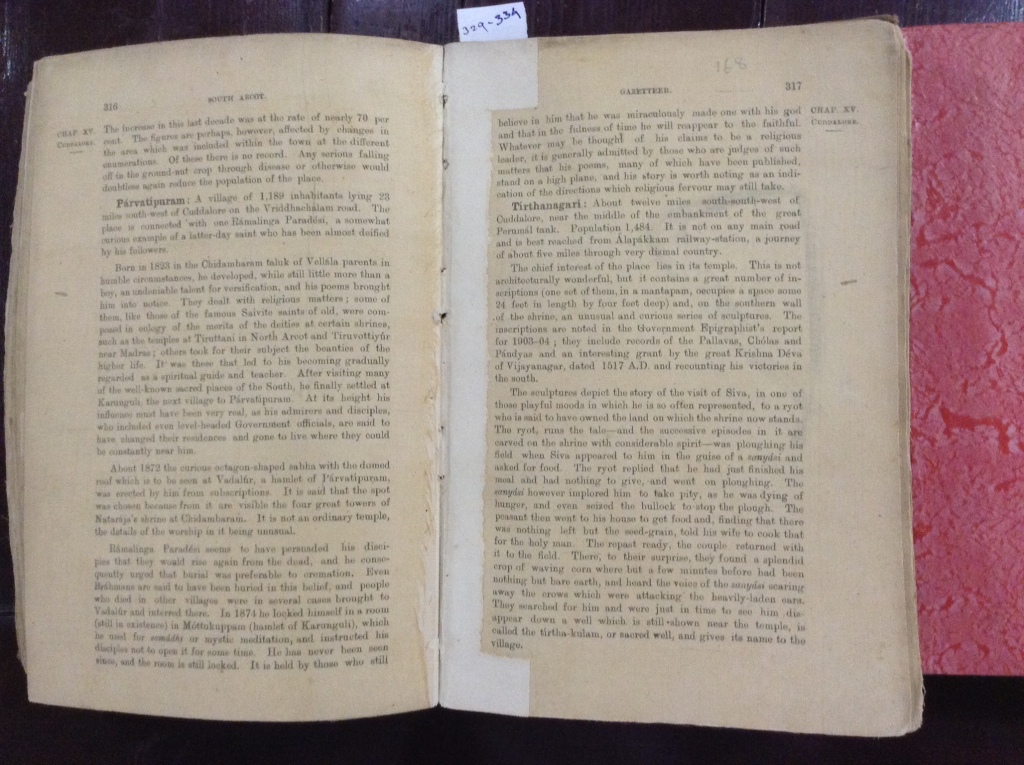Manual of South Arcot District was compiled by the then British Collector John Henry Garstin, of South Arcot District in Southern India. This book was published by Lawrence Asylum Press in 1878.
Parvatipuram:
A village of 1,189 inhabitants lying 23 miles south west of Cuddalore on the Vriddhachalam road. The place is connected with one Ramalinga Paradesi, a somewhat curious example of a latter-day saint who has been almost deified by his followers.
Born in 1823 in the Chidambaram taluk of Vellala parents in humble circumstances, he developed, while still little more than a boy, an undeniable talent for versification, and his poems brought him into notice. They dealt with religious matters; some of them like those of Saivite saints of old, were composed in eulogy of the merits of the deities at certain shrines, such as the temples at Tiruttani in North Arcot and Tiruvottiyur near Madras; others took for their subject the beauties of the higher life. It was these that led to his becoming gradually regarded as a spiritual guide and teacher. After visiting many of the well known sacred places of the South, he finally settled at Karunguli the next village to Parvatipuram. At its height his influence must have been very real, as his admirers and disciples, who included even level-headed Government officials, are said to have changed their residences and gone to live where they could be constantly near him.
About 1872 the curious octagon shaped sabha with the domed roof which is to be seen at Vadalur, a hamlet of Parvatipuram, were erected by him from subscriptions. It is said that spot was chosen because from it are visible the four great towers of Natraja’s shirne at Chidambaram. It is not an ordinary temple, the details of the worship in it being unusual.
Ramalinga Paradesi seems to have persuaded his disciples that they would rise again from the dead, and he consequently urged the burial was preferable to cremation. Even Brahmans are said to have been buried in this belief and people who died in other villages were in several cases brought to Vadalur and interred there. In 1874 he locked himself in a room (still in existence) in Mettukuppam (hamlet of Karungui), which he used for samadhi or mystic meditation and instructed his disciples not to open it for some time. He has never been seen since, and the room is still locked. It is help by those who still believe in him that he was miraculously made one with his god and that in the fulness of time he will reappear to the faithful. Whatever may be though of his claims to be a religious leader, it is generally admitted by those who are judges of such matters that his poems, many of which have been published stand on high place, and his story is worth noting as a indication of the directions which religious fervor ay still take.





